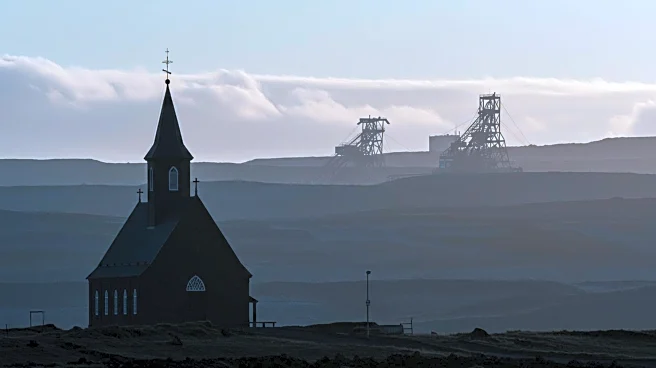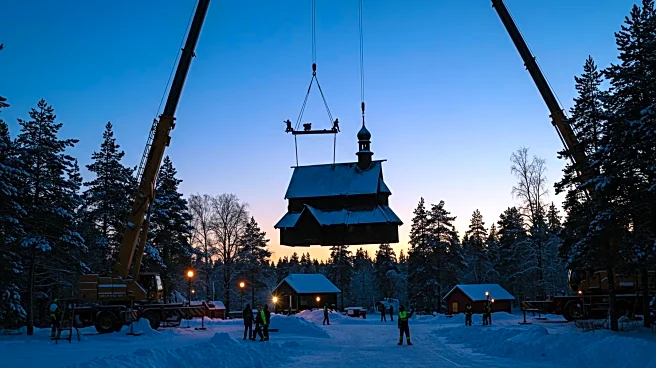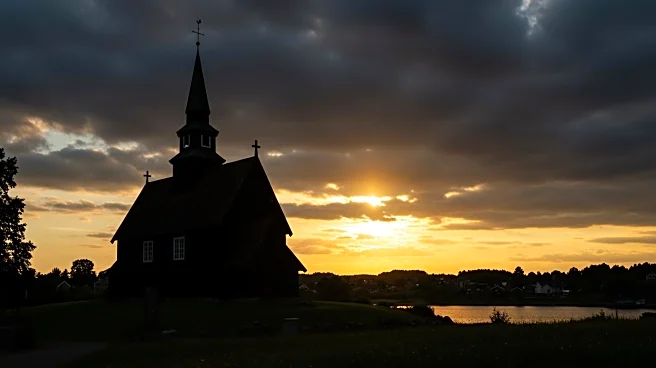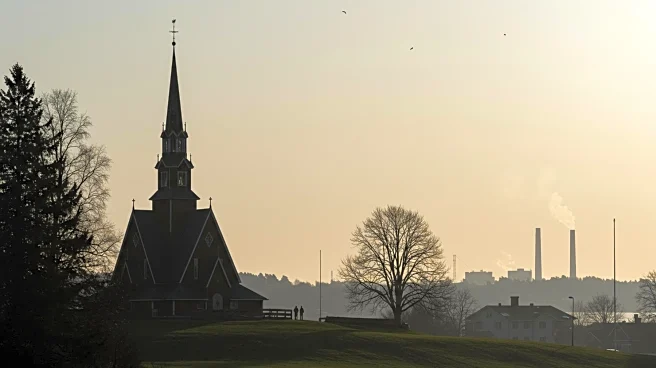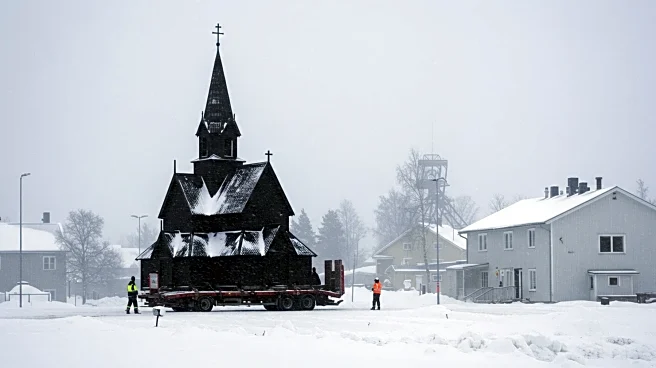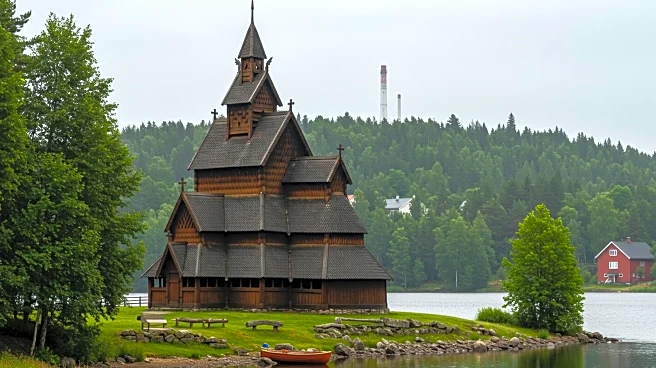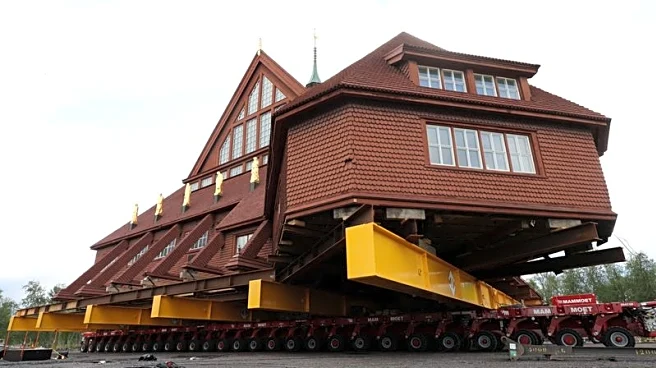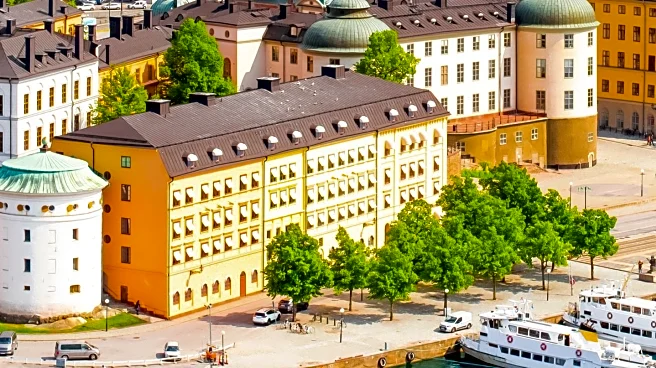What's Happening?
Sweden's iconic Kiruna Church, a 113-year-old wooden structure, has been relocated to a new town square to avoid damage from the expanding iron ore mine beneath the city. The church's move is part of a decades-long project to shift the entire city due to ground instability caused by mining activities. The relocation involved a two-day, five-kilometer journey, reflecting the complex emotions of the community as they leave their historic ground. The mine, crucial for Kiruna's existence, has produced significant amounts of ore and is vital for modern technology manufacturing.
Why It's Important?
The relocation highlights the tension between economic development and cultural preservation. The mine is essential for Kiruna's economy, but its expansion threatens the city's infrastructure and the cultural heritage of the Sami people. The mine's strategic importance is underscored by its designation as a Strategic Project by the European Union, aiming to reduce reliance on foreign minerals. This situation illustrates the broader challenges faced by communities balancing industrial growth with cultural and environmental preservation.
What's Next?
The relocation is part of a 30-year urban transformation plan, affecting thousands of residents and homes. While some structures will be demolished, others will be moved or rebuilt. The project aims to preserve key cultural sites while accommodating the mine's expansion. The church's reopening is planned for next year, offering a new beginning for the community while maintaining its historical significance.
Beyond the Headlines
The move raises ethical questions about the impact of industrial activities on indigenous lands and cultural heritage. It highlights the need for sustainable development practices that consider the long-term effects on communities and the environment. The situation in Kiruna could serve as a model for other cities facing similar challenges, emphasizing the importance of balancing economic growth with cultural preservation.
